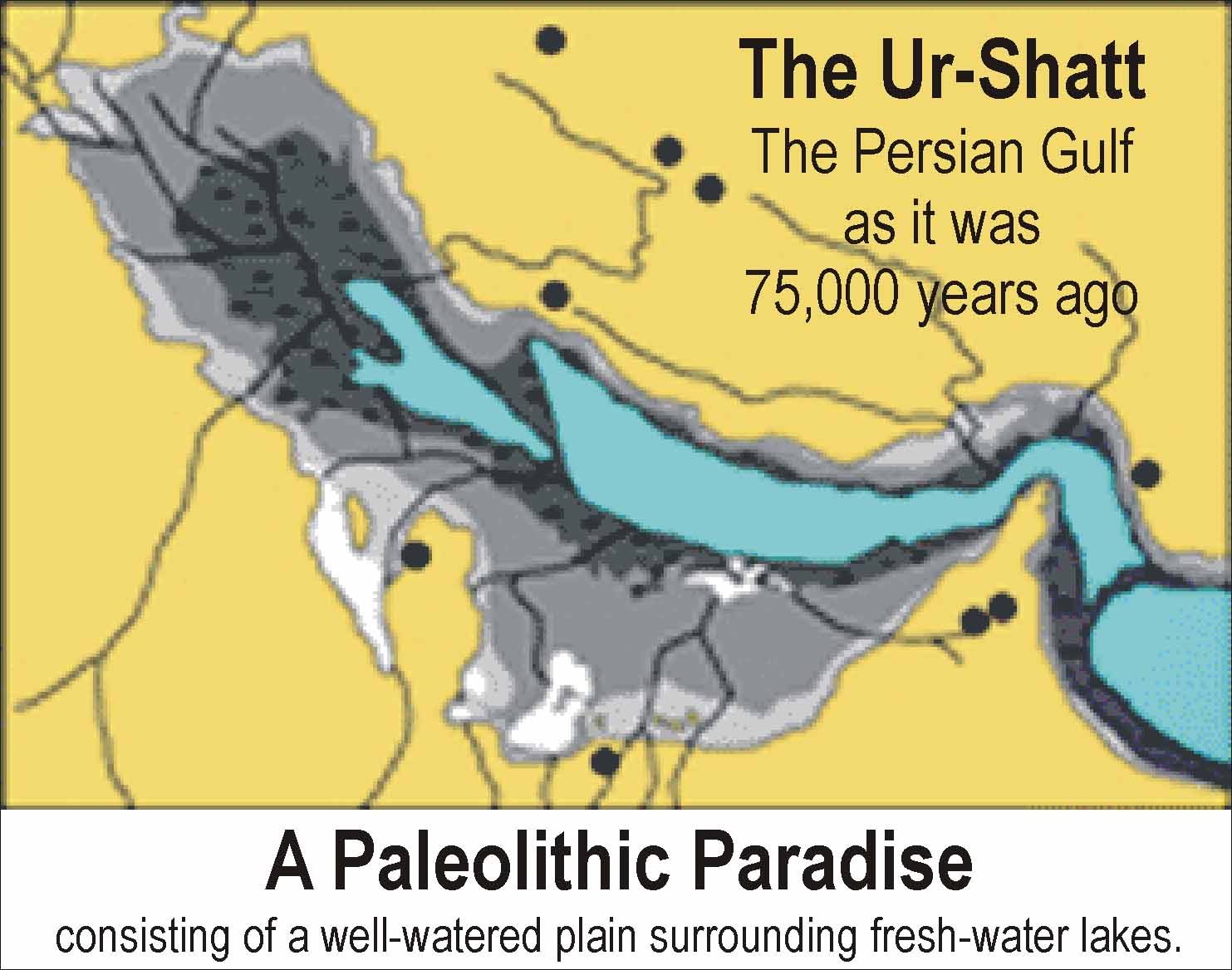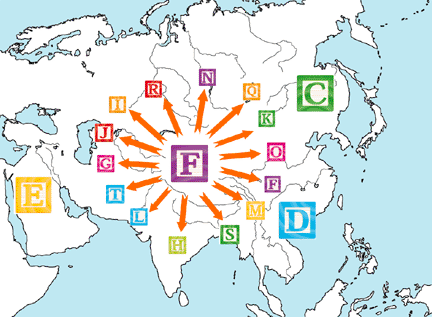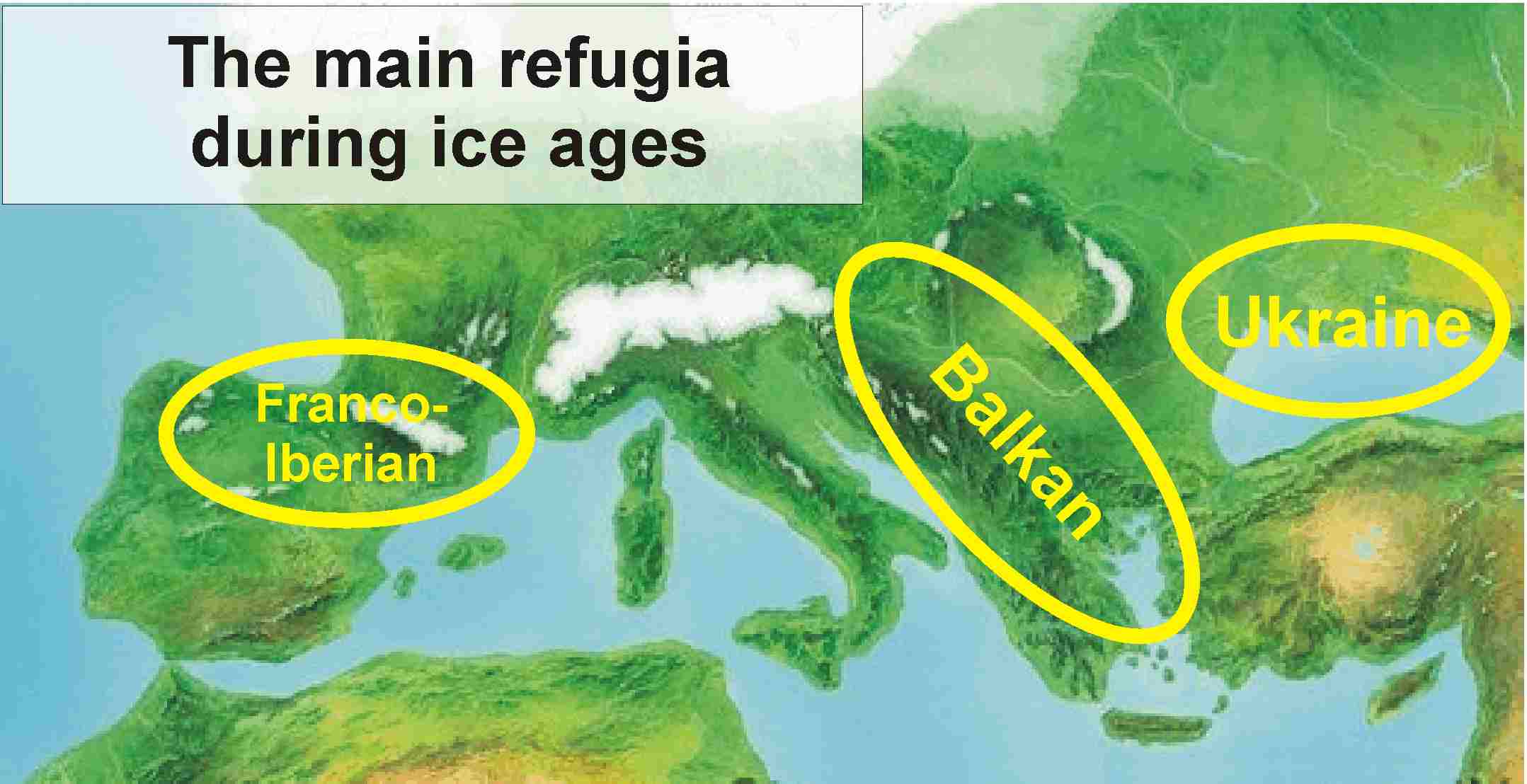




Haplogroups F to I
60,000 y.a. __Haplogroup F emerged from Haplogroup CF. (SNP M89, defines Haplogroup F).
Haplogroup F may have developed in the Tigris/Euphrates delta in the Ur-Shatt,
or old Shatt river valley. In that part of the Weichselian ice age, the sea level was about 200' lower, so the Persian Gulf was dry land to the south past the Strait of Hormuz. The area was a well watered plain surrounding fresh-water lakes. There were abundant resources to support hunter-gatherers. It was a paleolothic paradise.
|
After its founding, perhaps in the Ur-Shatt, F spread out to occupy most of southwest Asia and Arabia. Many small groups formed and migrated outward following the coast and the rivers. These groups evolved into 14 of the main haplogroups known today. Haplogroup F is ancestral to about 90% of non-African men worldwide. |
55,000 y.a. __Haplogroup F diverged through stages to Haplogroup IJ
Haplogroup F occupied an immense amount of real estate, including Arabia, Persia, and most of India. Haplogroup IJ developed somewhere in the north-western end of that huge area. Considering the dry climate, water resources would have been critical. They would have found good conditions in the area between the Tigris and Euphrates, the area now encompassing Baghdad, Tehran, and Kurdestan.50,000 y.a. __The Glinde and Moershoofd Interstadial warm period began
Groups G, H, and K branched off and are not ancestors of L-161.
50,000 y.a. __The Mousterian Pluvial warm wet period began
45,000 y.a. __Haplogroups I and J split from IJ in Persia.
The group that would become Haplogroup I went northward up the Tigris and Euphrates rivers through Anatolia, then split going around both sides of Lake Pontus, the Black Sea in a fresh water phase. From there they re-populated Europe during the 10,000 year long Glinde-Moershoofd warm period. The timing was from from 50,000 to 39,400 years ago. (J spread from Kurdestan mostly to the south and west, populating the entire eastern and southern Mediterranean region.) There are still significant populations of subgroups of I and J remaining in Kurdestan and Fars province. Here is a link to a map of the modern distribution of Haplogroup I2a2. The modern distribution clearly surrounds the North Sea, formerly 'Doggerland'. (SNP M-170 defines Haplogroup I.)45,000 y.a. __ Cro-Magnons, an early group of Haplogroup I, colonized Europe.
The distribution maps suggest that Haplogroup I1 - M253 went to the east of the Black Sea to the far north and then were driven back south (up the Rhine, down the Danube) into the Balkan Refugium by the return of the ice about 28,000 years ago.
L-161 ancestors, the Cro-Magnons of Haplogroup I2 - M438, went west of the Black Sea and north to the area that is now Ukraine and Moldova. From there, they populated most of Europe. When the ice returned, the various Haplogroup I tribes took refuge in all three main refugia, but our ancestral groups were those P37 and M423 who survived in the Ukraine Refugium.


